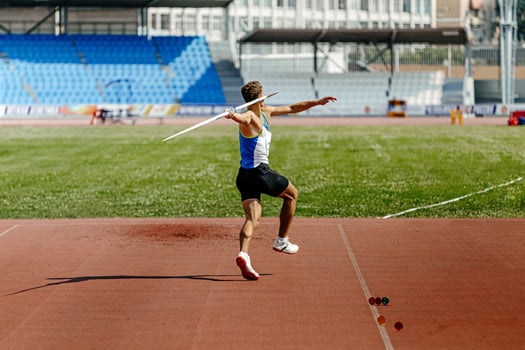
Approximately 85 percent of Olympic athletes have issues with disc degeneration or herniation, according to SI.com. Similar lower back problems are common among NFL players. In fact, athletes of all skill levels and ages are just as susceptible to disc-related injuries that can result in herniation. This article explains how athletes often deal with herniated discs.
Easing Pain and Related Discomfort
For many athletes, playing through the pain is par for the course. However, it can become difficult to perform sports-related activities if your herniated disc pain is coupled with radiating nerve pain, especially if the pain is affecting mobility and range of motion. For this reason, athletes typically make an effort to ease discomfort as much as possible. Steps taken to accomplish this goal often include:
• Heat therapy to increase circulation and promote healing
• Cold applications in the affected area to ease inflammation
• Anti-inflammatory medications
• Therapeutic injections to improve results with physical therapy
Knowing When to Sit Out Games/Practices and Rest
Some initial rest is necessary to give nerves and tissues affected by a herniated disc time to heal. For athletes, this often involves sitting out a few games or practice sessions. At the same time, rest should be somewhat limited. Your doctor can recommend an appropriate physical therapy and exercise routine to keep your spine-supporting muscles strong.
Modifying Workout/Practice Routines
Not working out or practicing at all is often not a realistic option for athletes with herniated discs. Instead, workout and practice routines are usually modified in a way that allows core muscles and muscles that support the spine to be sufficiently strengthened. This also eases herniated disc pain by reducing direct pressure on the affected disc. Water-based exercises are a common option, since all core muscles can be targeted with less pressure and stress. Similar results can often be achieved with spine-related exercise and workouts involving:
• Recumbent cycling
• Elliptical machine use, since it is easier to maintain correct posture
• Certain yoga poses
• Swimming
• Light cardiovascular exercise
Another step often recommended for athletes with herniated discs is adding more variety to workouts. This eases disc-related discomfort by reducing stress on the same muscle groups and spreading out the beneficial results of appropriate exercise.
Properly Preparing for Sports-Related Activities
Even after the more severe or disruptive herniated disc symptoms ease, athletes need to take proper precautions to reduce the risk of flare-ups. One way to do this is with proper warm-ups prior to playing sports, practicing, or starting a workout. Gentle stretching can also be effective, as the muscles required for full participation in sports are sufficiently stimulated.
Getting an Accurate Diagnosis
Whenever an injury is suspected, an athlete is typically encouraged or required to see a doctor or appropriate specialist. It is a good idea to take the same step if you are experiencing signs of disc-related pain during or after sports-related activities. Getting an accurate diagnosis means the extent of the damage to the disc can be determined, which makes it more likely you will respond well to treatment recommendations.
If you have a herniated disc due to sports-related activities, surgery may be discussed and potentially recommended to provide relief. For example, if your herniated disc is not responding to conservative treatment, a discectomy may be the best option. Although this is generally a very successful procedure, patients with a large hole in the outer ring of the disc have a significantly higher risk of reherniation following surgery. Often, the surgeon will not know the size of the hole until beginning surgery, and having a large hole in the outer ring of the disc more than doubles the risk of needing another operation. A new treatment, Barricaid, is a bone-anchored device that closes this hole, and 95 percent of Barricaid patients did not undergo a reoperation due to reherniation in a 2-year study timeframe. This treatment is done immediately following the discectomy—during the same operation—and does not require any additional incisions or time in the hospital.
If you have any questions about the Barricaid treatment, ask your doctor or contact us at 844-288-7474.
For full benefit/risk information, please visit: https://www.barricaid.com/instructions.


Comments